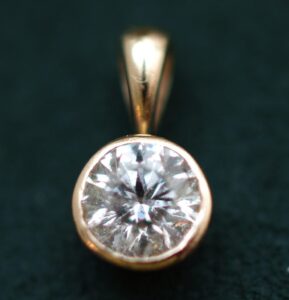Is Emerald Rarer Than Diamond In Real Life?
Is Emerald Rarer Than Diamond In Real Life? Imagine being on a fantastic treasure hunt, trying to uncover the sought-after gems hiding within Earth’s crust. Now, picture those gems as emeralds and diamonds, two of nature’s most precious stones. Your journey with this insightful article, “Is Emerald Rarer Than Diamond In Real Life?” unfolds an intriguing narrative about these priceless gifts of nature. Explore the fascinating world of gemology as you uncover facts about the rarity, value, and allure of emeralds and diamonds that you may have never known before. Let your curiosity lead the way as the enticing truths unfold about these gemstones in real life.

Understanding the Concept of Rarity
When you’re exploring the wonderful world of gemstones, one of the terms you’ll frequently come across is ‘rarity.’ But what exactly does this mean, and how does it apply to gemstones like diamonds and emeralds? Let’s dive in and find out!
Definition of Rarity
Rarity in simple terms refers to the state or quality of being rare. In the context of gemstones, rarity refers to how difficult it is to find or obtain a particular type of gemstone. Factors such as the conditions necessary for the gemstone to form, its rate of formation, and its geographic availability all contribute to its rarity.
Factors Determining Rarity
Rarity is determined by a combination of several factors. This includes a gemstone’s availability, the difficulty in mining it, its quality and size, and the demand and supply in the marketplace. A gemstone can be rare due to its exceptional quality or because of its limited supply.
Basic Overview of Diamonds
Well, who doesn’t know diamonds, right? They’re the most coveted gemstones in the world and for good reasons!
Formation of Diamonds
Diamonds are formed deep within the Earth’s mantle under conditions of intense heat and pressure. These conditions convert carbon into crystalline structures, creating diamonds. These rough diamonds are then transported to the Earth’s surface through volcanic activity.
Common Locations and Sources of Diamonds
Diamonds are sourced from all around the world, with major deposits found in countries like Russia, Botswana, Canada, Australia, and South Africa. De Beers, Alrosa, and Rio Tinto are among the world’s top diamond mining companies.
Popularity and Uses of Diamonds
Diamonds are renowned for their sparkling brilliance and hardness. They are primarily used in fine jewelry, especially engagement rings, due to their perceived symbol as an emblem of love and commitment. Some diamonds are also used in industrial applications, such as diamond-tipped drill bits and saws.
Basic Overview of Emeralds
Emeralds, with their captivating green hue, have enchanted generations after generations.
Formation of Emeralds
Emeralds are a variety of the mineral beryl, which forms in hydrothermal veins. The unique green color is due to traces of chromium and vanadium. The formation of emeralds is a complex process that requires specific geological conditions, making them quite rare.
Common Locations and Sources of Emeralds
Colombia is the most famous source of emeralds, producing high-quality gems with their distinct saturated green color. Other significant sources of emeralds include Zambia, Brazil, and Zimbabwe.
Popularity and Uses of Emeralds
Emeralds have been prized for their spectacular color and are often associated with beauty, harmony, and immortality. They are widely used in jewelry, and their rich green hue pairs well with a variety of metals and other gemstones.
Comparing the Formation Process of Diamonds and Emeralds
Though diamonds and emeralds both originate from the earth, they each have unique formation processes that lend to their rarity.
Geological Requirements for Diamond Formation
Diamonds require very specific conditions for their formation. They need extremely high pressure and temperatures, around 725,000 pounds per square inch and 2200-2400 degrees Fahrenheit, which only occur about 100 miles below the Earth’s surface. https://gemologyonline.com/
Geological Requirements for Emerald Formation
Emerald formation is a bit different, often occurring closer to the Earth’s surface in zones of hydrothermal activity. The formation of emeralds requires a rare combination of specific minerals in the right concentrations, under certain temperature and pressure conditions.
Timeframe of Formation for Both Gemstones
Both diamonds and emeralds take millions to billions of years to form. The long timeframe required for their creation adds to their rarity.
Comparing the Locations and Sources of Diamonds and Emeralds
Where diamonds and emeralds are found also play a major role in their rarity.
World’s Major Diamond Deposits
Major diamond deposits are spread across different regions and continents but are mostly concentrated in Russia, Botswana, Canada, and South Africa.
World’s Major Emerald Deposits
In contrast, emerald deposits are far less extensive. Most high-quality emeralds are found in Colombia, with other significant deposits in Zambia and Brazil.
Impact of Location on Rarity
Since high-quality emeralds are derived from fewer locations than diamonds, they could be considered rarer based on this criterion alone.
Visual and Physical Differences Between Diamonds and Emeralds
In addition to their formation and sources, diamonds and emeralds are differentiated by their visual and physical characteristics.
Comparing Color and Clarity
While diamonds are most often associated with a clear, colorless appearance, they can come in a variety of hues. On the other hand, emeralds are known for their lush green color, which can range from light to dark green.
Comparing Hardness and Durability
Diamonds are incredibly hard, rating a 10 on the Mohs scale of hardness, making them very scratch-resistant. Emeralds, in contrast, have a hardness of 7.5 to 8, but they are often filled with inclusions (internal fractures), which can make them less durable.
Comparing Cut and Shapes
Diamonds are usually cut into various shapes such as round, princess, emerald, and more to maximize their brilliance. Emeralds are most often cut in the emerald (step) cut to enhance their color and minimize the visibility of inclusions.
Market Demand and Supply for Diamonds and Emeralds
Understanding the market dynamics of diamonds and emeralds can also help evaluate their rarity.
Global Demand for Diamonds
Diamonds’ popularity and demand are relatively steady throughout the year, with significant spikes during the holiday and wedding seasons.
Global Demand for Emeralds
Emerald demand can fluctuate based on fashion trends, but their unique, vibrant color always maintains a place of high regard in the gemstone market.
Impact of Market Demand and Supply on Rarity
As with any commodity, the principle of supply and demand affects gemstone rarity. If the supply of a gemstone can’t keep pace with the market demand, it will be considered rarer, which could contribute to a higher market value.
Role of Synthetic Diamonds and Emeralds in Market
Artificially created gemstones can also impact the rarity and value of natural gemstones.
Process of Creating Synthetic Diamonds
Synthetic diamonds, or lab-grown diamonds, are made by replicating the high-pressure, high-temperature conditions in which natural diamonds form.
Process of Creating Synthetic Emeralds
Lab-created emeralds are produced using the hydrothermal process, which mimics the conditions under which natural emeralds formed deep within the earth.
Impact of Synthetic Gems on Rarity
Synthetic diamonds and emeralds have become more prevalent in the gemstone market. While they have the same physical and chemical properties as natural gemstones, they are more plentiful and hence not considered rare.
Analyzing the Rarity of Diamonds vs Emeralds
Now, back to our original question – which is rarer: diamonds or emeralds?
Which is Rarer: Diamonds or Emeralds?
Based on the formation process, geographical sources, quality, and the prevalence of synthetic counterparts, emeralds could be considered rarer than diamonds.
Factors Contributing to the Rarity of Diamonds
Factors such as their size, color, clarity grades, and overall quality contribute to a diamond’s rarity.
Factors Contributing to the Rarity of Emeralds
For emeralds, rarity is determined by their color, clarity, size, and overall quality. It’s important to note that finding an emerald without any inclusions and excellent transparency is extremely rare.
Implications of Rarity on Value and Price
Rarity undoubtedly affects the gemstone’s value, here’s how:
How Rarity Impacts Diamond Pricing
Rarer diamonds, which are top-quality in terms of clarity, cut, color, and carat weight, typically command higher prices.
How Rarity Impacts Emerald Pricing
Similarly, high-quality emeralds, particularly those with intense green color and good transparency, are considered rare and accordingly have higher price tags.
Are Rarer Gems Necessarily More Valuable?
While rarity often leads to higher prices, value isn’t solely based on rarity. Other factors such as market demand, fashion trends, and the gem’s beauty and desirability also affect its value. A beautifully cut, high-quality diamond may still be more valuable than a rare emerald with visible inclusions.
In conclusion, both diamonds and emeralds are prized for their beauty and unique qualities. Understanding the concept of rarity and how it relates to these gems can enhance your appreciation of their true value. Whether you’re selecting a gem for investment or personal enjoyment, choosing a gem that speaks to you is what matters most. Happy gem hunting!


